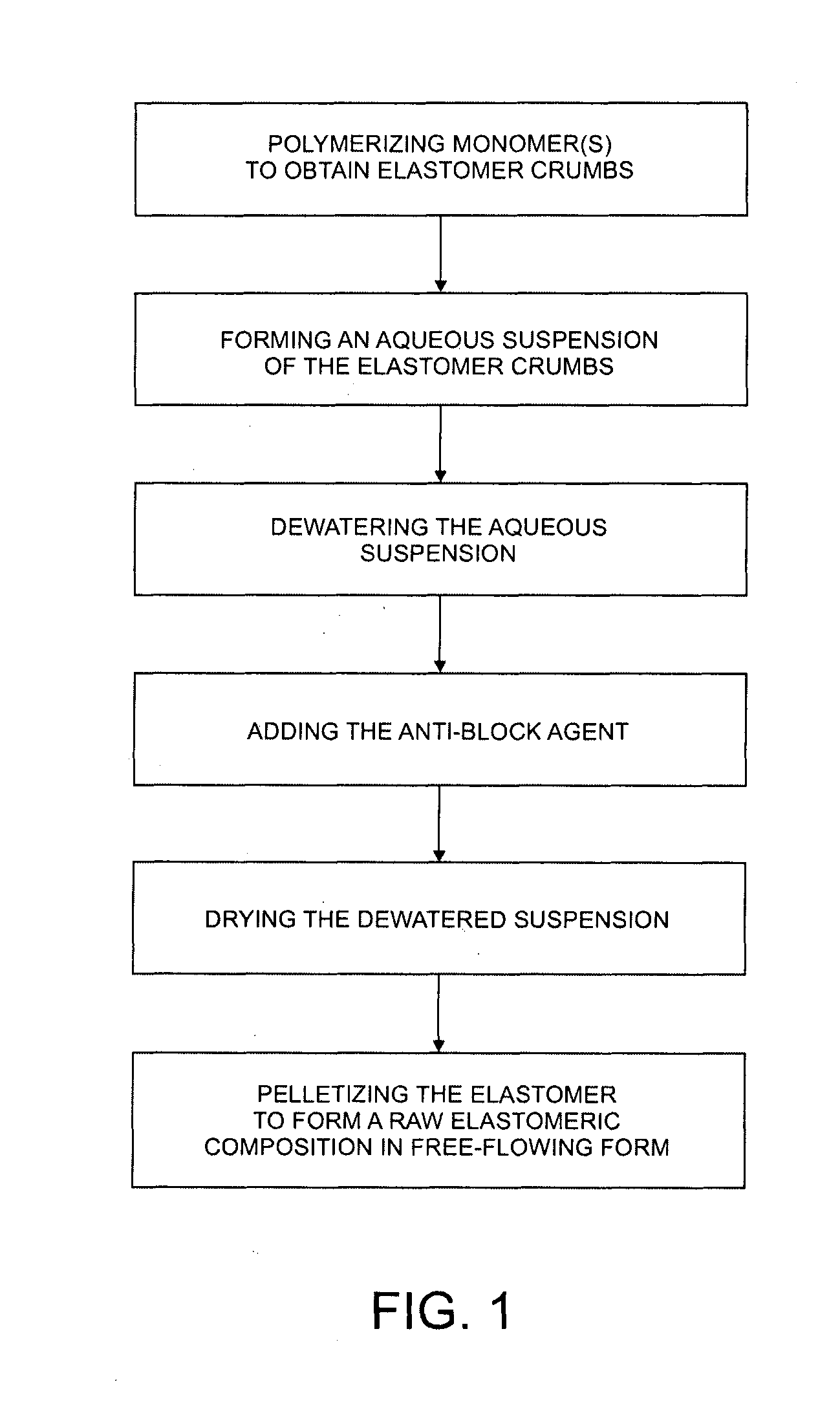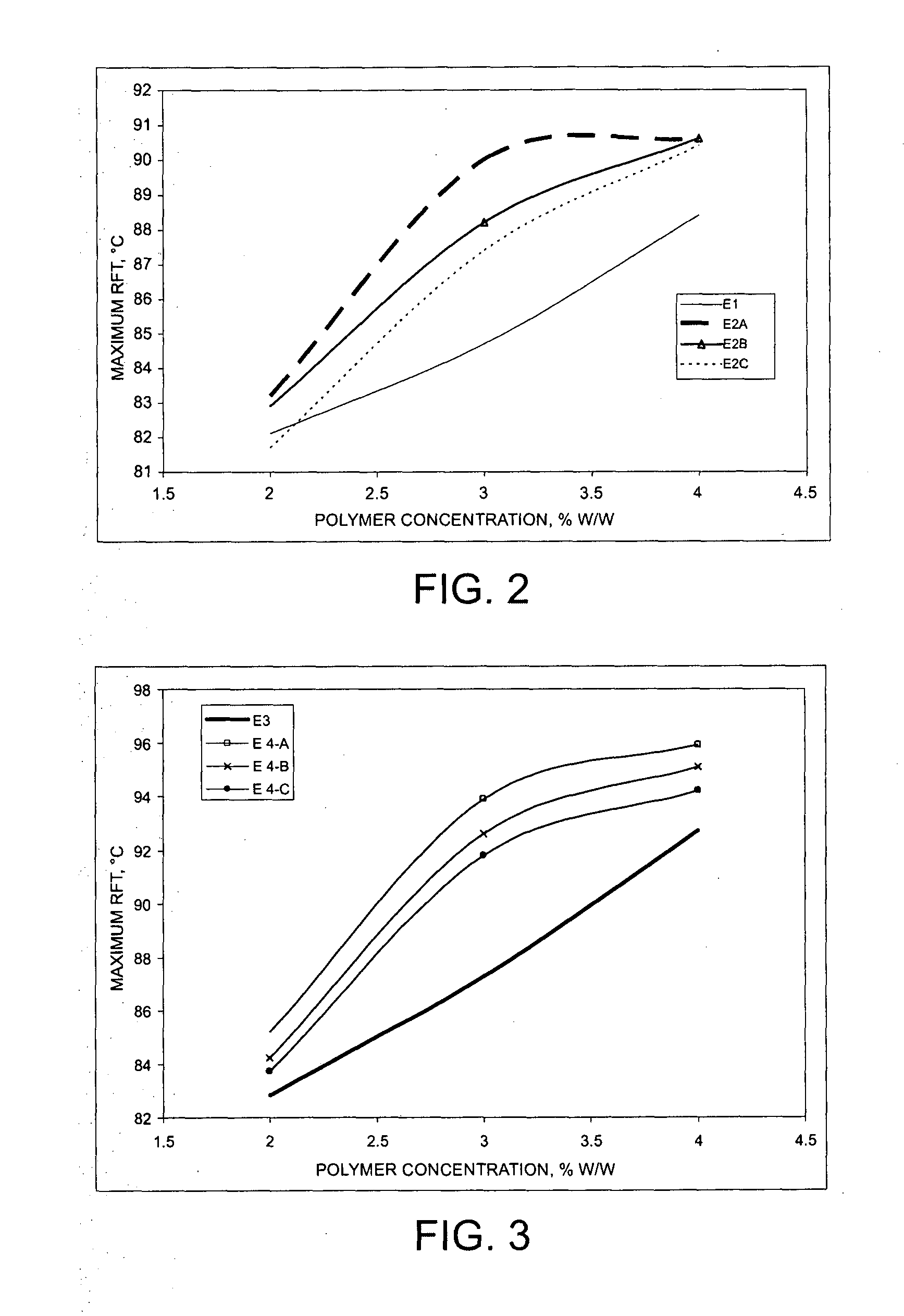Synthetic raw elastomeric compositions in free-flowing pellet form and process for obtaining the same
a technology of elastomeric compositions and free-flowing pellets, which is applied in the direction of building components, transportation and packaging, and bituminous material adhesives, etc., can solve the problems of compromising tackiness, compromising the properties of elastomeric in the final application, and difficult to handle the same in raw form, so as to avoid the formation of large blocks and the effect of difficult utilization
- Summary
- Abstract
- Description
- Claims
- Application Information
AI Technical Summary
Benefits of technology
Problems solved by technology
Method used
Image
Examples
example 1
Raw Elastomer Without Anti-Block Agent
[0081]The SBR elastomer was obtained as described above, with molecular weights of 109,000 Daltons and a monomer ratio 25 / 75 styrene / butadiene, but no anti-blocking agent was used for this process. The material obtained in this example was designated E1 and it was characterized and used as a reference for comparison in testing.
example 2
Raw Elastomer With Anti-Block Agent of the Present Invention
[0082]The SBR elastomer was obtained as described for Example 1, but an anti-blocking agent was incorporated to the extruder prior to the drying step. The anti-blocking agent was a mixture of calcium carbonate, magnesium sulfate, calcium oxide, calcium hydroxide, potassium aluminosilicate, calcium aluminosilicate, alumina, titanium dioxide, silica and talc, in combination with sodium estearate as compatible emulsifier. The anti-block agent was used in powder form or as a water-based emulsion and it was added in different proportions. Through this process Examples 2A, 2B and 2C were developed, using respectively 2%, 3.5% and 6% by weight (dry base) of the anti-blocking agent. The materials obtained were further characterized and tested.
example 3
Raw Elastomer Without Anti-Block Agent
[0083]The SBR elastomer was obtained as described above, but this time with molecular weights of 240,000 Daltons and a monomer ratio 15 / 85 styrene / butadiene, but no anti-blocking agent was used for this process. The material obtained in this example was designated E3 and it was characterized and used as a reference for comparison in testing.
PUM
| Property | Measurement | Unit |
|---|---|---|
| molecular weight | aaaaa | aaaaa |
| particle size | aaaaa | aaaaa |
| melt flow index | aaaaa | aaaaa |
Abstract
Description
Claims
Application Information
 Login to View More
Login to View More - R&D
- Intellectual Property
- Life Sciences
- Materials
- Tech Scout
- Unparalleled Data Quality
- Higher Quality Content
- 60% Fewer Hallucinations
Browse by: Latest US Patents, China's latest patents, Technical Efficacy Thesaurus, Application Domain, Technology Topic, Popular Technical Reports.
© 2025 PatSnap. All rights reserved.Legal|Privacy policy|Modern Slavery Act Transparency Statement|Sitemap|About US| Contact US: help@patsnap.com


